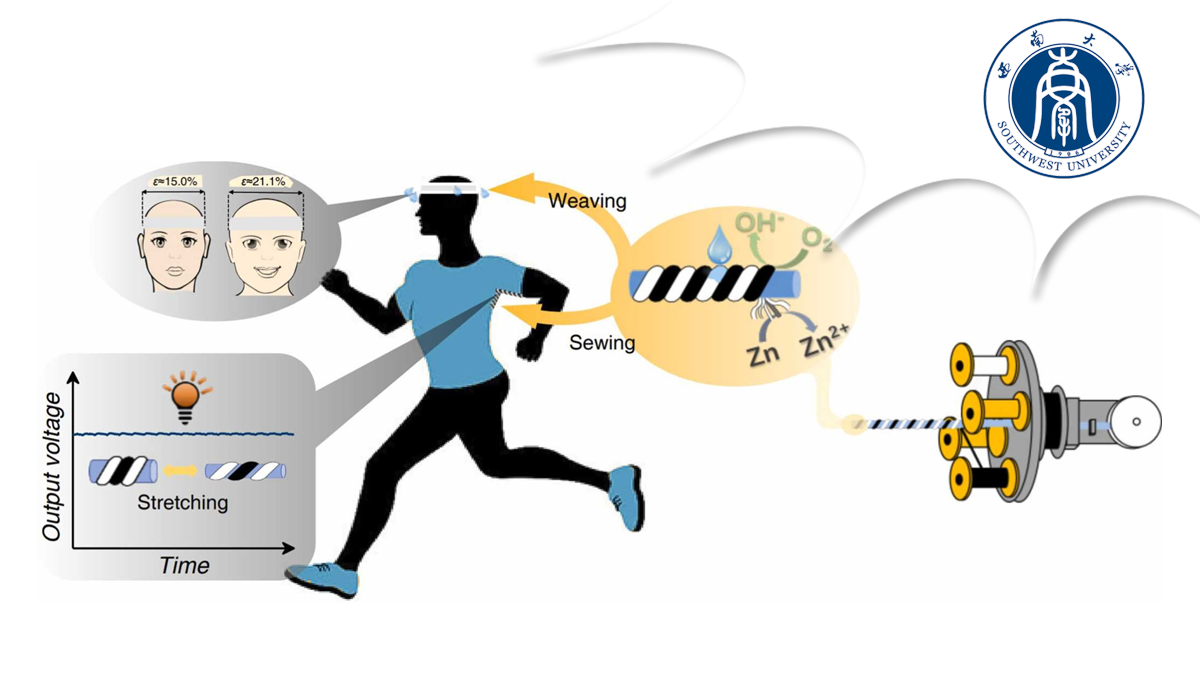Researchers have developed stretchable sweat-activated yarn batteries with stable power output during dynamic stretching. Integrated into textiles, they could power wearable electronics like headlights and pedometers during exercise.
The rapid development of wearable electronics has spurred demand for power sources that can be integrated with textiles and maintain stable output performance during dynamic movements. Traditional rigid power sources, due to their inflexibility and discomfort during physical activities, struggle to meet the requirements of wearable systems.
To address this challenge, researchers from the School of Materials & Energy, Southwest University, have developed a stretchable sweat-activated yarn battery (S-SAYB). It exhibits ultra-stable power output while offering excellent stretchability and deformability.
“The battery bridges the gap between stretchability and output stability, a significant long-standing challenge for stretchable power sources,” explains senior author Prof. Zhisong Lu.
Two key strategies were employed to achieve output stability during dynamic stretching:
(1) Elastic fibres wrapped with a hydrophilic layer were designed to retain electrolytes for ion migration;
(2) High electrode wrapping density was applied to minimise electrodes separation, which significantly increased the available ion migration pathways.
“The S-SAYBs can be scaled up to meter-scale fabrication using a self-designed wrapping machine and seamlessly integrated into electronic textiles through traditional techniques, such as weaving, knitting, sewing, and stitching,” explains Lu.
In the study, S-SAYBs were integrated into headbands and sports T-shirts as reliable, flexible, stretchable, and strain-insensitive energy sources, providing stable power support for wearable electronic devices during exercise.
“Given that S-SAYBs are intended for use as skin contact devices, their biocompatibility to human skin could be a crucial factor,” says Lu. “The on-skin tests show that S-SAYBs can be integrated into textiles that come into contact with the skin as a safe energy source.”
Going forward, the research team may focus on the integration with diverse electronic devices, achieving multifunctional integration and promoting the upgrade of wearable devices from single function to intelligent systems.












